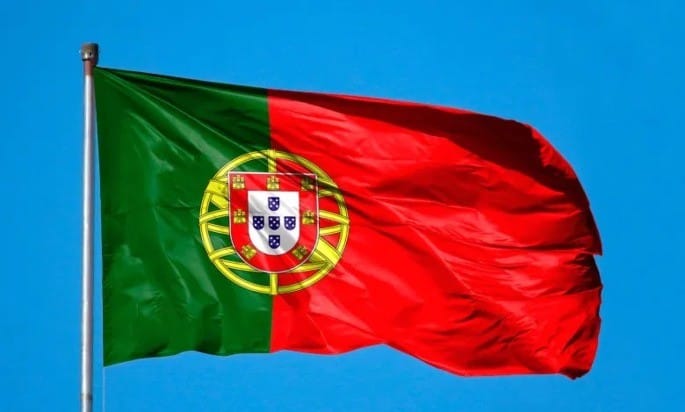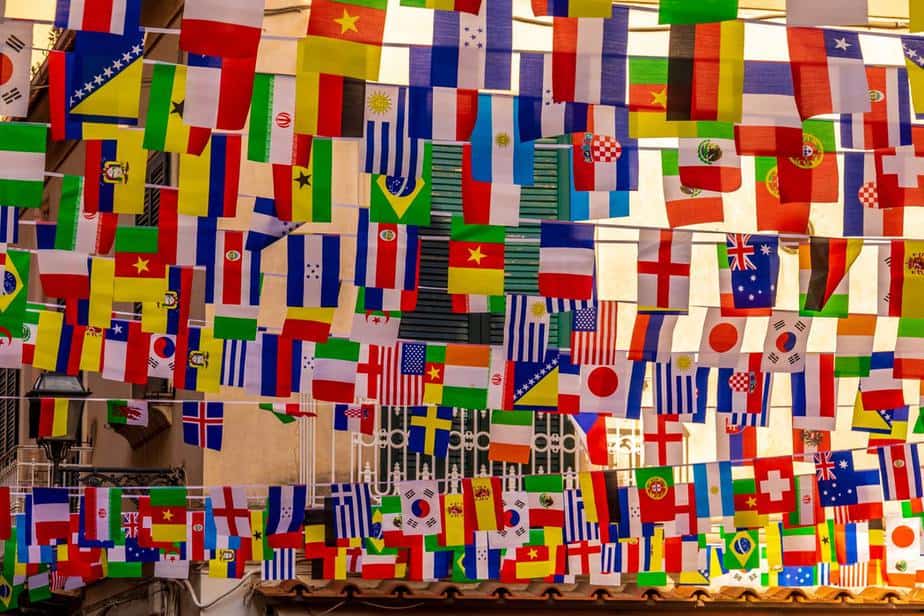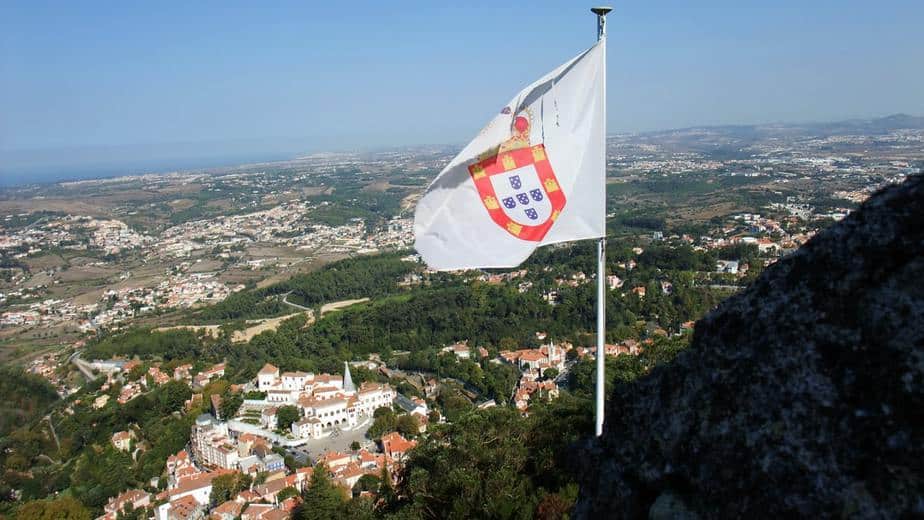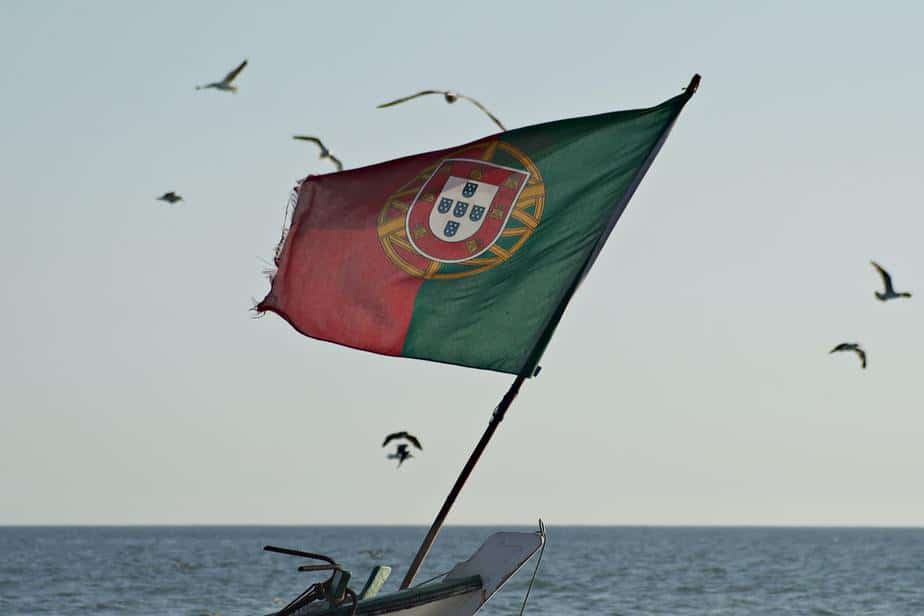Top 10 amazing facts about the Portuguese flag
The national flag is a symbol of the country’s independence and so, its design and colours say a lot about its history. In some flags there are a lot of “hidden” symbols within its design, and that is the case of the Portuguese flag, which has some complex meaning and symbols designed into it. In this article, I will describe top 10 amazing facts about the Portuguese flag that you probably did not know.
The flag itself was not always the same
Since its first implementation and design in 1095, due to historical happenings such as: wars with other kingdoms, the fall of certain kings and the throne of Portugal being overtaken by other countries, its flag as taken its toll and so, it has changed dramatically throughout the years.
With the implementation of the Republic, Portugal was no longer ruled by a king, and so the Republicans decided it was also needed to change the most important symbol of a country: its flag.
The Portuguese flag as we know it today was first introduced on June, 30th of 1911, only one year after the fall of the Portuguese Monarchy and it has been established as a symbol of the Portuguese Republic Revolution that took place on October 5th 1910.
So who created the Portuguese flag?

João Chagas
After the Portuguese Republic Revolution, the original Monarchy flag was abolished and the state promoted a contest to design the new Portuguese flag. The winners of the contest were: the famous painter Columbano Bordalo Pinheiro, the journalist João Chagas and writer Abel Botelho, along with the help of two Republic Revolutionists , Lieutenant Ladislau Pereira and Captain Afonso Palla.
Colours and their meaning
The background colours of the Portuguese flag are green and red and are not proportionally equal to each other, but that is not by mistake, it has a deep meaning to it.
The green part symbolizes the hope that the Portuguese people had for their country and the red part symbolizes the blood shed by those who died serving the nation.
So even though the Portuguese had lots of hope on their people, a great number of people died defending the flag, so their efforts have been forever symbolized on the Portuguese flag occupying a large portion of the flag as red.
The navigation instrument on the flag
Between the fifteenth and the seventeenth century, the Portuguese were one of the most important countries to discover new lands across the seas.
One of the most iconic instruments used by the Portuguese sailors was the armilary sphere, an astronomy instrument designed to travel the seas through the guidance of the stars. First introduced to the Portuguese by the famous Templar Knights, this instrument was crucial to the sailors trying to find new lands while roaming the seas, and so it was implemented on the Portuguese flag as a symbol to all of the discoveries made by the Portuguese.
The Portuguese Coat of Arms
The Portuguese Coat of Arms is of the oldest symbols of its flag, being constantly changed since its first implementation in 1143, until it came to its current state as we know it today.
It is located on top of the armilary sphere and in the middle of the two colours that divide the Portuguese flag. It has a red background with seven castles in it and on the inside five little blue shields, on a white background, which within each of them there are five bezant coins painted in white.
Castles within the flag
During the reign of D. Afonso III, seven castles were conquered by the Portuguese on the Algarve region, and they represent a symbol of the victory against the Moors who invaded the southern part of Portugal since the late eighth century until the thirteenth century and in 1249, they were finally defeated.
At the time this was a very important landmark for the Portuguese because they have been in constant war with the Moors for over 600 years, and so, this remarkable accomplishment has been immortalized on the flag as a symbol of the perserverance of the Portuguese people.
The story behind the blue shields
Before the great battle of “Ourique” on July, 25th of 1139, history says that the Angel Custódio came before the Count Afonso Henriques as a divine messenger and predicted the victory of Portugal in many wars to come.
This angel also supposedly told Afonso Henriques that God was looking over him and his nation during the upcoming battles and that he would conquer a lot more lands in the years to come.
And so, inspired by this spiritual experience, it is told that Afonso Henriques killed five Moor Kings defending its country on the cities of Sevilha, Badajoz, Elvas, Èvora e Beja before even decimating the remaining enemy troops.
Afonso Henriques decided to incorporate within the flag these five blue shields in honor of God and Jesus Christ for helping him and his foes during these battles and as a symbol of a true epic battle in Portuguese history.
Religious bezants on the flag
After this crucial battle against the Moors, Afonso Henriques was proclaimed the first King of Portugal, and so it also included another reference and honor to Jesus Christ on the Portuguese flag, the five bezants in each blue shield.
These bezants represent the suffering of Jesus Christ when he was nailed to the cross and symbolize the thirty bezants that were paid to Judas to betray Jesus Christ.
When the flag is hoisted
The Portuguese flag should always be of an equal or superior dimension when hoisted with other flags such as the European Union flag, foreign national flags, regional flags or other private flags and, when hoisted on the same poll, the Portuguese flag should be always be on top, this is obviously when hoisted in Portugal, this is not the case for other countries.
Places where the flag should be hoisted
Everyday the Portuguese flag should be hoisted in the headquarters of the National Sovereignty. Also, at least on every sunday the Portuguese flag should be hoisted in all public administration places such as libraries, police stations, hospitals and museums, national monuments and headquarters of public enterprises.
If you are planning on buying a Portuguese flag as a souvenir, make sure you watch for the details described in this article. Many souvenir shops in Portugal have flags for sale that are not true to the original one, or some may have a few minor changes such as more castles within the flag, or the red side being smaller then the green side, but thanks to these 10 facts about the Portuguese flag, you will surely not be mistaken when buying one.
Planning a trip to Paris ? Get ready !
These are Amazon’s best-selling travel products that you may need for coming to Paris.
Bookstore
- The best travel book : Rick Steves – Paris 2023 – Learn more here
- Fodor’s Paris 2024 – Learn more here
Travel Gear
- Venture Pal Lightweight Backpack – Learn more here
- Samsonite Winfield 2 28″ Luggage – Learn more here
- Swig Savvy’s Stainless Steel Insulated Water Bottle – Learn more here
Check Amazon’s best-seller list for the most popular travel accessories. We sometimes read this list just to find out what new travel products people are buying.
















